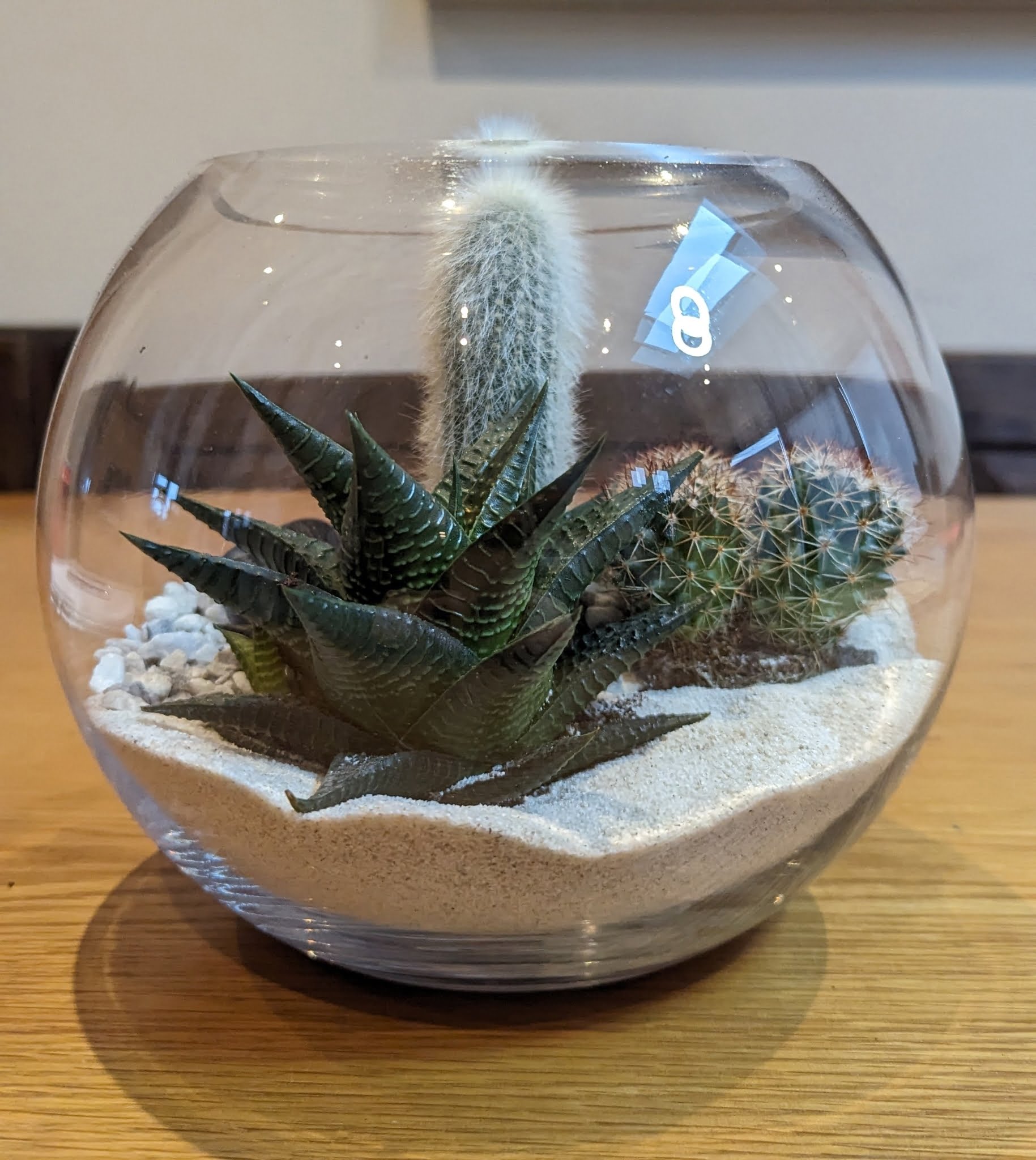
Watering Your Closed Terrarium

The Ultimate Guide to Watering Your Closed Terrarium
Welcome to Blue Squid Creation, where we dive deep into the art and science of terrarium making! Today, we’re focusing on a crucial aspect of closed terrarium care: watering. Closed terrariums are self-sustaining ecosystems that bring a slice of the natural world into our homes and offices. However, even these miniature worlds need a little help from us to thrive. Here’s everything you need to know about watering your closed terrarium.
Understanding Closed Terrariums
A closed terrarium is a sealed glass container containing soil, plants, and sometimes small decorations, creating a self-contained environment. The sealed nature of these terrariums allows for the circulation of water through evaporation and condensation, mimicking the Earth’s water cycle on a miniature scale. This process generally keeps the terrarium self-sufficient, but occasional intervention may be necessary to maintain balance.
When to Water Your Closed Terrarium
Closed terrariums rarely need watering, thanks to their unique ecosystem. However, there are a few signs that indicate it’s time to add water:
- Soil Dryness: If the soil looks dry and plants start wilting, it’s a clear sign that your terrarium needs water.
- Lack of Condensation: Some condensation should be visible inside the terrarium. A complete absence might indicate that it’s too dry inside.
- Plant Health: If plants appear brown or crispy, they might be under-watered.
How to Water Your Closed Terrarium
Watering a closed terrarium requires a gentle touch to avoid overwatering, which can lead to mold growth and root rot. Here’s how to do it right:
- Use Distilled Water: Tap water can contain minerals that might build up in your terrarium. Distilled water is pure and prevents this issue.
- Water Sparingly: Add water in small amounts. A spray bottle can help you control the amount of water you’re adding. Aim for moist soil, not wet or soggy.
- Monitor and Adjust: After watering, observe your terrarium over the next few days. If there’s excessive condensation, leave the lid off for a day or two to let some moisture escape.
Tips for Maintaining the Perfect Balance
- Light: Ensure your terrarium is placed in indirect light. Too much direct sunlight can cause overheating and excessive condensation.
- Ventilation: Occasionally opening the terrarium can help prevent mold growth by allowing fresh air to circulate.
- Pruning: Regularly prune dead or overgrown plants to maintain a healthy ecosystem inside your terrarium.
Conclusion
A closed terrarium is a fascinating ecosystem that brings the beauty of nature into our living spaces. With the right care and occasional watering, your terrarium can thrive for years, offering a glimpse into the wonders of the natural world. Remember, the key to a healthy terrarium is balance. By following these guidelines, you’ll ensure your Blue Squid Creation terrarium remains a vibrant and self-sustaining world.
Related Posts


Benefits of Terrariums in Your Home or Office

